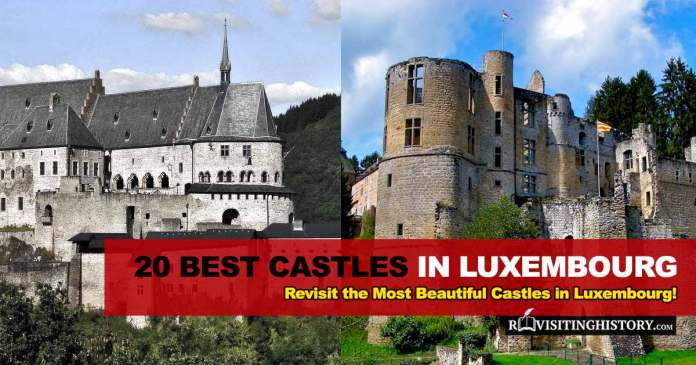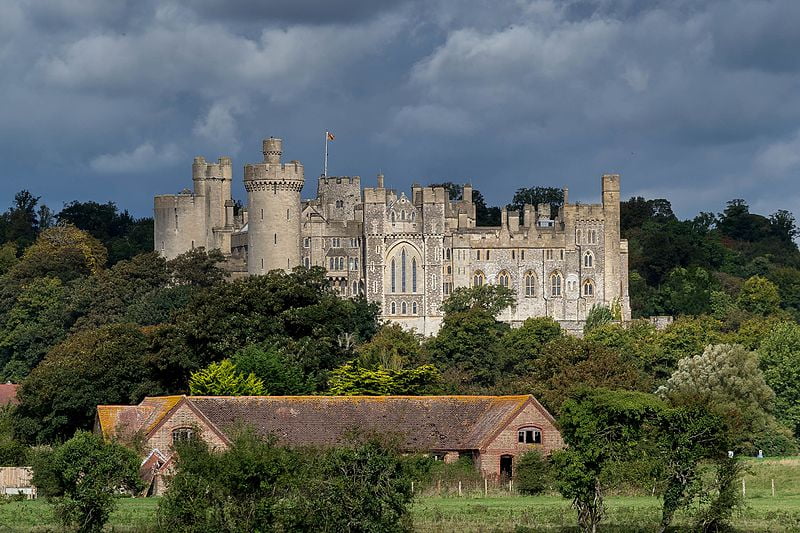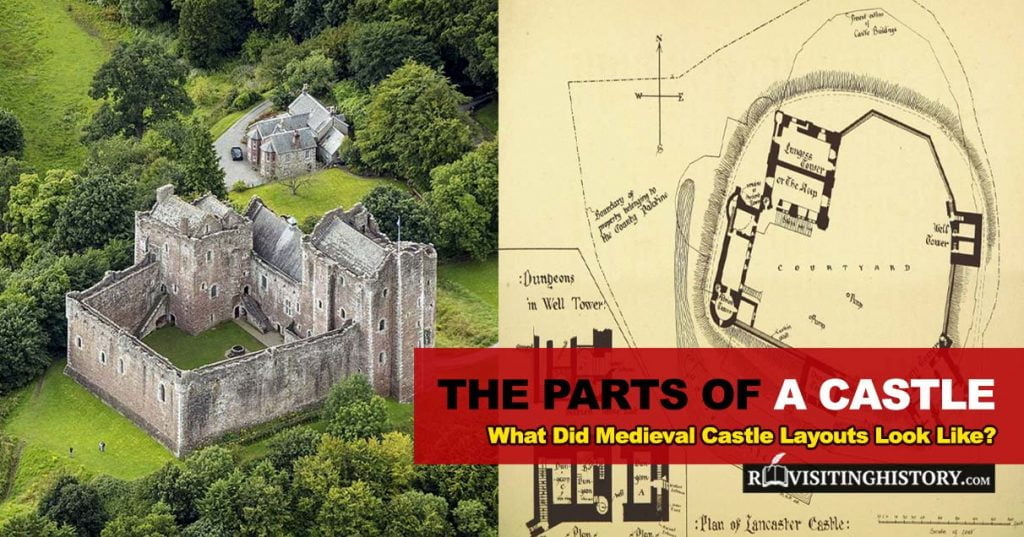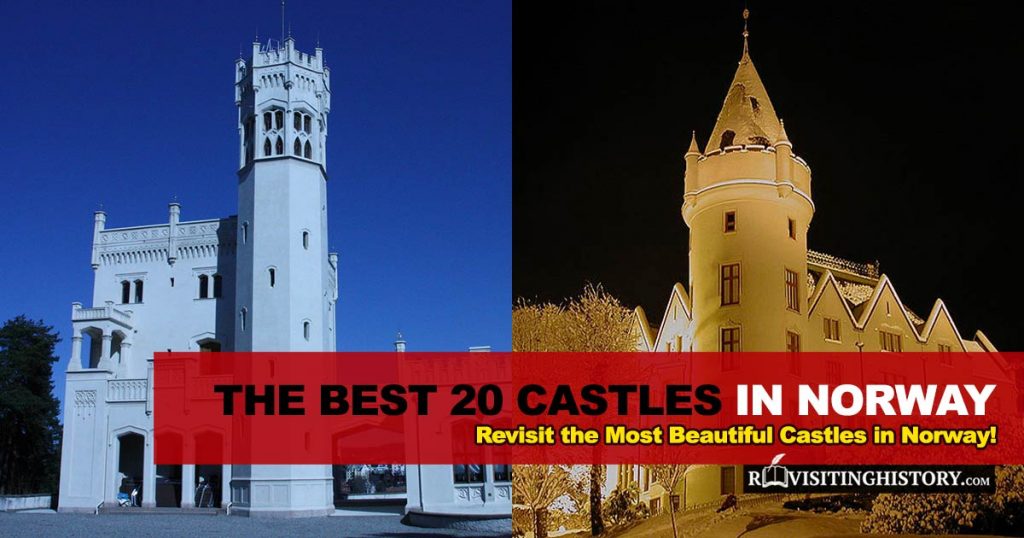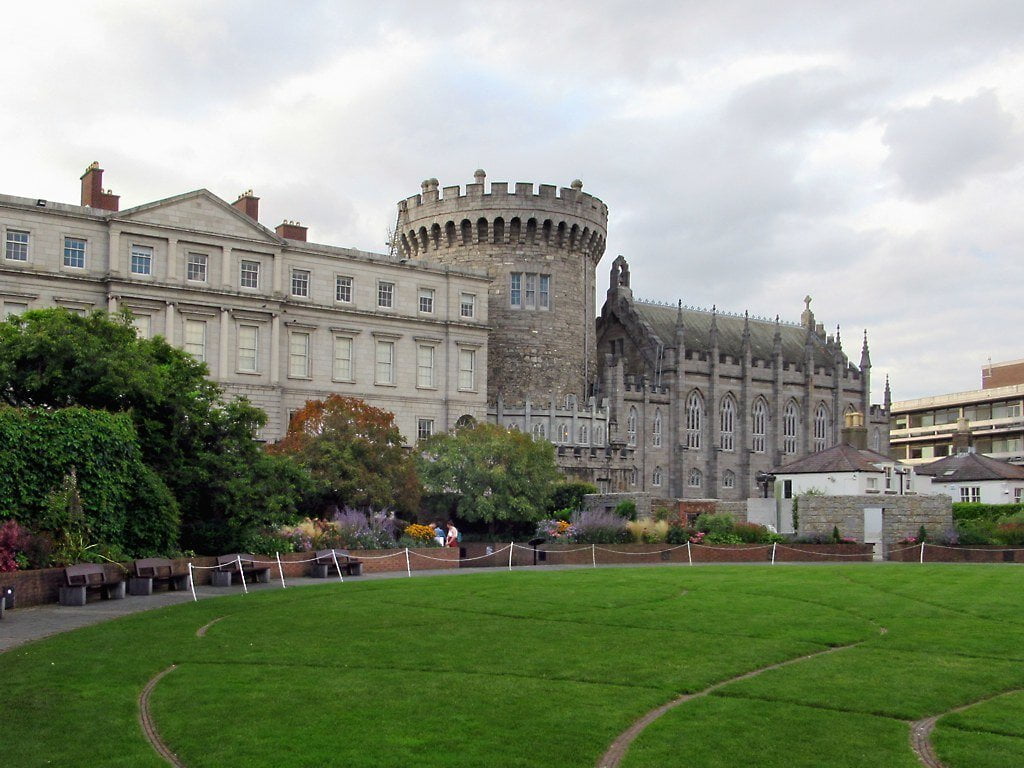The rich, complex history of Luxembourg makes it a very popular destination for those inspired by its stunning European architecture and picturesque natural beauty. Though smaller in size in comparison to its neighbors, Luxembourg has been a very important part of Europe’s traditions and history.
Luxembourg’s history of hundreds of years has a past interwoven with tradition, royalty, war, and peace. Because it was surrounded by powerful neighbors, the tiny country needed defensive castles for its survival since the 10th century. In addition to these, Luxembourg has a collection of magnificent stately palaces and castles that open a window into the great archaeological and historical heritage of the country.
Out of the 106 castles in Luxembourg during medieval times, approximately 50 of them are currently standing. Some of these have been restored to their prior glory while others are picturesque ruins.
Here is our list of the 10 most stunning castles in Luxembourg that you must absolutely visit. And for the avid travelers who want to get the most out of their vacation we’ve added 10 more, lesser known but equally spectacular sites to visit. So make sure you make your way to the end of the list for those must-visit places few tourists know about.
Table of Contents
10 Most Popular Castles to Visit in Luxembourg
The order of the list is based on Google search volume of each castle = popularity.
1. Vianden Castle
An outstanding historical monument, Vianden Castle is one of Luxembourg’s best and largest fortified castles. Built in the early medieval era, this fabulous place was the residence of the Count of Vianden.
Vianden Castle is one of the largest and most beautiful residences from the Gothic and Romanesque periods. The castle was built between the 11th and 14th centuries and has been recently restored to its former glory.
This castle is extremely popular with visitors. Particularly fascinating aspects of the castle include the complex stonework, spires, and turrets. The castle hosts the annual Medieval Festival in the summer.
- Location: Vianden, Northern Luxembourg
- Time built: 11th – 14th Centuries
- Architectural style: Gothic
- Touring: Allowed. Visit the official website for more information.
2. Bourscheid Castle
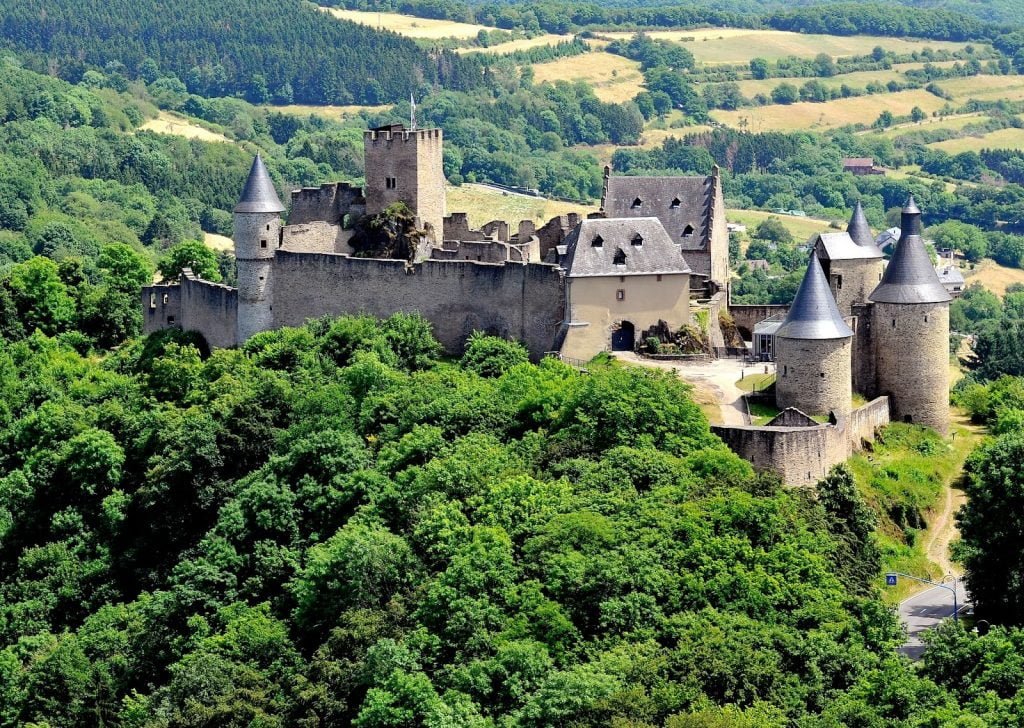
A beautiful drive around a winding, steep mountain road will eventually lead you to the medieval Bourscheid Castle. The long climb will certainly feel worthwhile as you gaze across the serene Sûre River from your position 150 meters (492 ft) above ground level.
Bourscheid Castle is the largest castle in Luxembourg. It has existed as a stone castle since the year 1000, before which it had existed as a wooden fort since Roman times. The medieval fortress was built in 4 phases. It was the final stage, in 1430, that added its many towers and the large enclosure.
On your visit to this historic castle, you can go into the old chapel or explore the picture-perfect views. Climb up the fading stairs and at the very top, you will be able to admire the River Sûre and its horseshoe curve. The thick forest that surrounds the river spans even further than you can see.
The castle is especially captivating in the evening. Tiny ground lights give the ancient walls a golden glow that makes them stand out with the night sky in the background.
- Location: Bourscheid, North-eastern Luxembourg
- Time built: 10th century
- Architectural style: Gothic
- Touring: Allowed. Visit the official website for more information.
3. Beaufort Castle
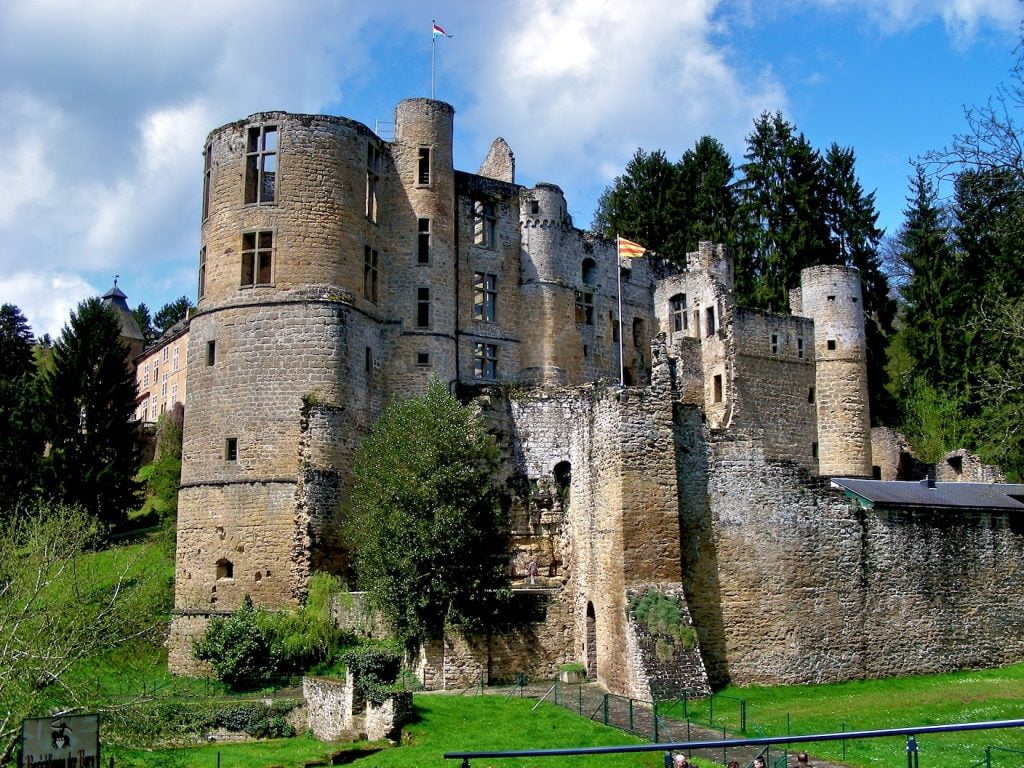
One of the oldest castles in Europe, Beaufort Castle dates back to the 11th century. The medieval castle is located in the beautiful countryside of Beaufort. It is an important part of the cultural heritage of Luxemburg.
Beaufort Castle was built between the 11th and 17th centuries. During the past centuries, the castle frequently changed owners. Due to centuries of neglect, the castle is in ruins, yet it still maintains its renaissance elegance.
In 1649, the governor of Luxembourg, Johann Baron von Beck, built a modern structure on the same grounds. The new renaissance castle functioned as a private residence right up to 2012.
Both castles are available for visits with a guided tour.
- Location: Beaufort, Eastern Luxembourg
- Time built: 11th – 17th Centuries
- Architectural style: Medieval & Renaissance
- Touring: Allowed only with advance booking. Visit the official website for more information.
4. Bourglinster Castle

This stunning medieval castle is one of the finest destinations if you are looking for spectacular settings and fine dining. The elegant and traditional surroundings of the castle provide the perfect setting for a visit, a celebration, meeting, or conference.
Bourglinster Castle was initially mentioned in the 11th century and later restructured and rebuilt during the 14th, 15th, and 16th centuries. The most recent renovations in 1968 and 1982 restored it to its full glory.
One of the best restaurants in Luxembourg, the Michelin-starred La Distillerie, is housed in Bourglinster Castle. The castle and its grounds are also the venues for activities including concerts, exhibitions, and other events.
Do plan your visit to the castle ahead of time as you can only visit by appointment.
- Location: Bourglinster, Central Luxembourg, 15km (9 miles) east of Luxembourg City
- Time built: 11th century, restructured between 14th-16th century
- Architectural style: Gothic
- Touring: By appointment only. Visit the official website for more information.
5. Esch-sur-Sure Castle

A huge historic fortress with a panoramic setting at the top of a hill, this castle was originally a fort tower. It was built to protect the nearby town in the year 927.
In the 13th century, Esch-sur-Sure Castle was expanded in the Gothic style to create a traditional castle structure. Though Esch-sur-Sure Castle is now in ruins, it is still a very impressive sight.
The castle is a protected historic treasure and a very popular tourist site. When beautifully illuminated in the evenings, the castle takes on a fairytale look, definitely worth a visit.
- Location: Esch-sur-Sure, North-western Luxembourg
- Time built: 927
- Architectural style: Gothic
- Touring: Allowed. Visit the official website for more information.
Revisit More Historic Places Below or Read Further
6. Clervaux Castle

The majestic Clervaux Castle is built on a rocky promontory and overlooks Clervaux Village. It was originally built as a fortress during medieval times. There are differing views among historians about Clervaux Castle being built on an earlier Roman fort or Celtic foundations.
The grand circular towers and stunning whitewashed walls are indeed impressive. Clervaux Castle houses local government offices, a tourist office, a museum of castle dioramas and models, along an extensive international photography exhibit.
The west wing was built in the 12th century; in the 15th century, the castle was extended greatly. There were extensive modifications made in later centuries. The castle was terribly damaged during World War II but is now restored to its earlier magnificence.
- Location: Beaufort, Northern Luxembourg
- Time built: 12th Century
- Architectural style:
- Touring: Allowed; only with advance booking. Visit the official website for more information.
7. Urspelt Castle
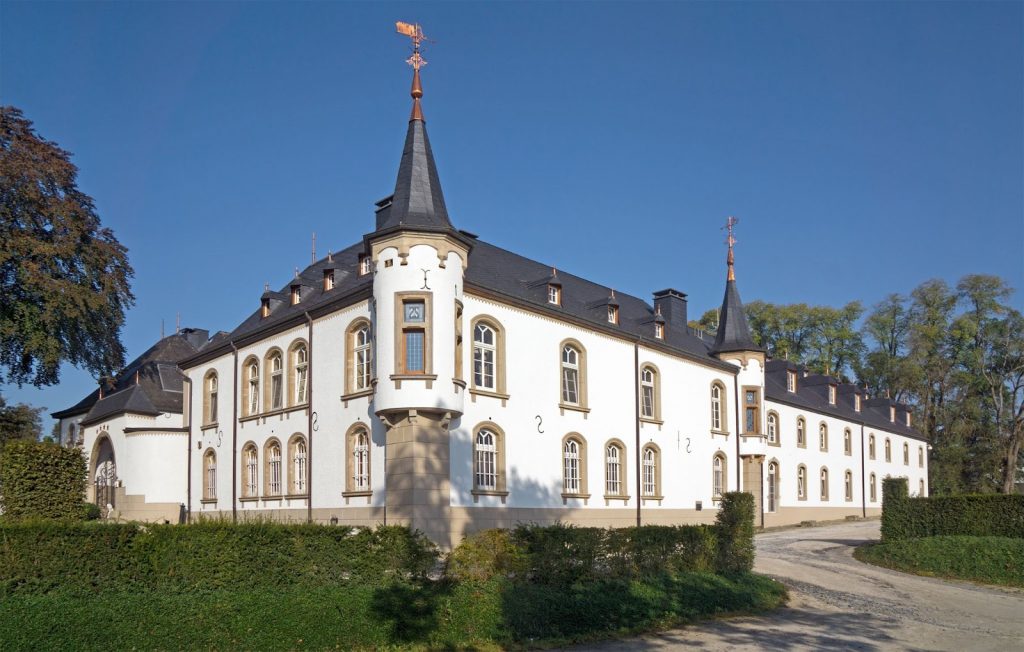
The fabulous Urspelt Castle is located in the lovely little village of Urspelt. The castle’s original structure has existed since the 16th to 17th centuries, although the castle was damaged extensively in later years.
Amand Bouvier purchased the remains of the property in 1860. He carried out extensive renovation and brought it into its magnificent current form. He also expanded the estate and added elm tree gardens and gorgeous parks.
During the 20th century, the castle was used by the Germans in World War II and later as a hunting lodge. It fell into complete ruin during this time.
Urspelt Castle is now classified as a national monument. Freddy Lodomez purchased the property in 2005. After an extensive 3-year renovation process, Urspelt Castle is now a luxury hotel and event venue.
- Location: Urspelt, Northern Luxembourg
- Time built: 16th – 17th Centuries
- Architectural style: Gothic
- Touring: Allowed. Visit the official website for more information
8. Larochette Castle
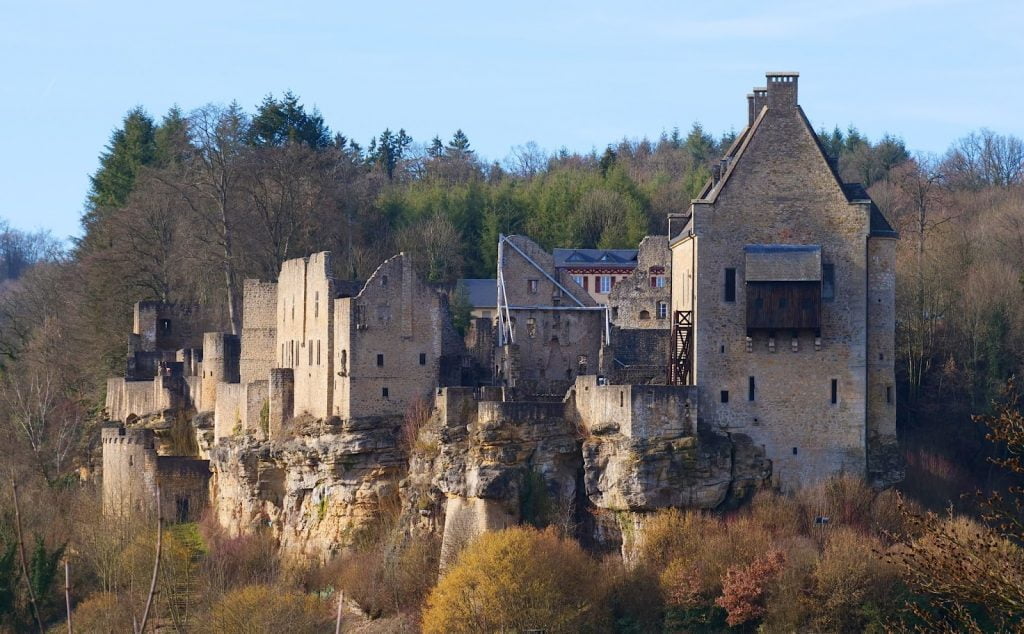
Built in the 11th century, Larochette Castle towers over the lovely area and the picturesque small town of Larochette. The fortified castle is perched on the Luxembourg sandstone promontory, approximately 150m (492 ft) high.
Built in the 11th century, Larochette Castle towers over the lovely area and the picturesque small town of Larochette. The fortified castle is perched on the Luxembourg sandstone promontory, approximately 150m (492 ft) high.
The castle was damaged severely by a huge fire in 1565. While some part of the castle is still irretrievable, the Crehange Manor building has been restored completely. Its historic walls are filled with temporary art exhibitions.
You can visit the servant quarters, dungeons, and dining halls that were unaffected by the fire. Additionally, there are several mountain biking routes and footpaths in the area for fabulous views of the entire castle complex.
- Location: Larochette, Central Luxembourg
- Time built: 11th Century
- Architectural style: Gothic
- Touring: Allowed. Visit the official website for more information.
9. Mersch Castle
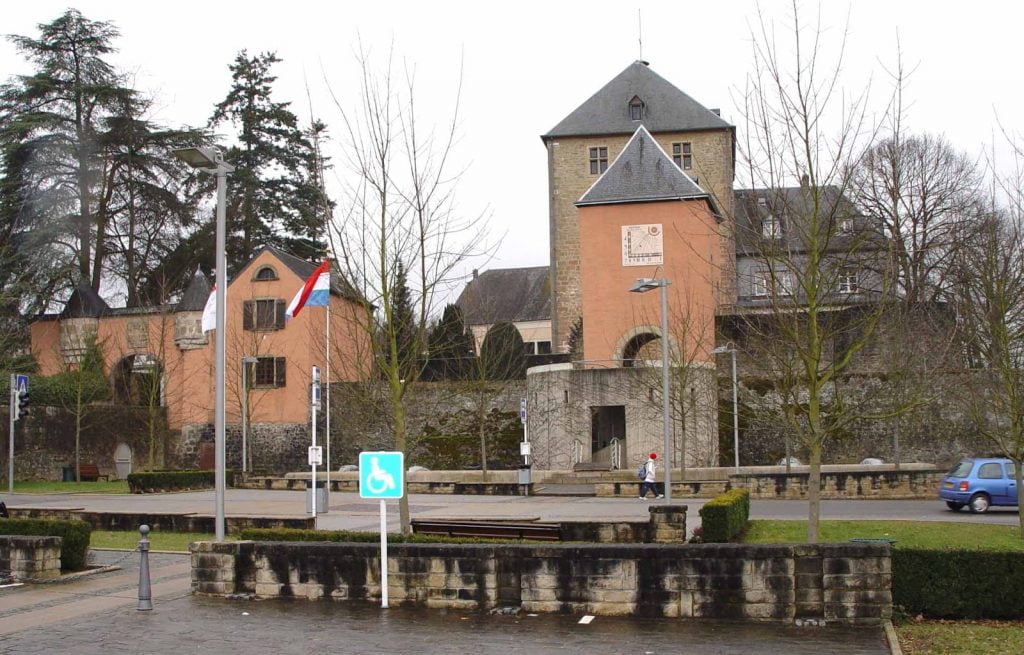
The first lord of Mersch, Theodoric, built the original castle with a moat during the 13th century. He was a knight and vassal of Countess Ermesinde. The castle had two construction periods.
After the Burgundian troops set it on fire, the abandoned castle was left to ruin for many years. During the 16th century, Paul von der Veltz restored the seven towers and the buildings–adding large windows and vaulted ceilings, making it a magnificent private residence.
Mersch Castle was destroyed by the Dutch in 1635 and only repaired in 1700 by Johann-Friedrich von Elter. In the 20th century, Mersch Castle underwent another renovation and was converted to a youth hostel in 1938 and later the Mersch town hall in 1993.
- Location: Mersch, Central Luxembourg
- Time built: 13th Century
- Architectural style: Baroque
- Touring: Not allowed. https://www.visitluxembourg.com/en/place/castle/mersch-castle
10. Schoenfels Castle
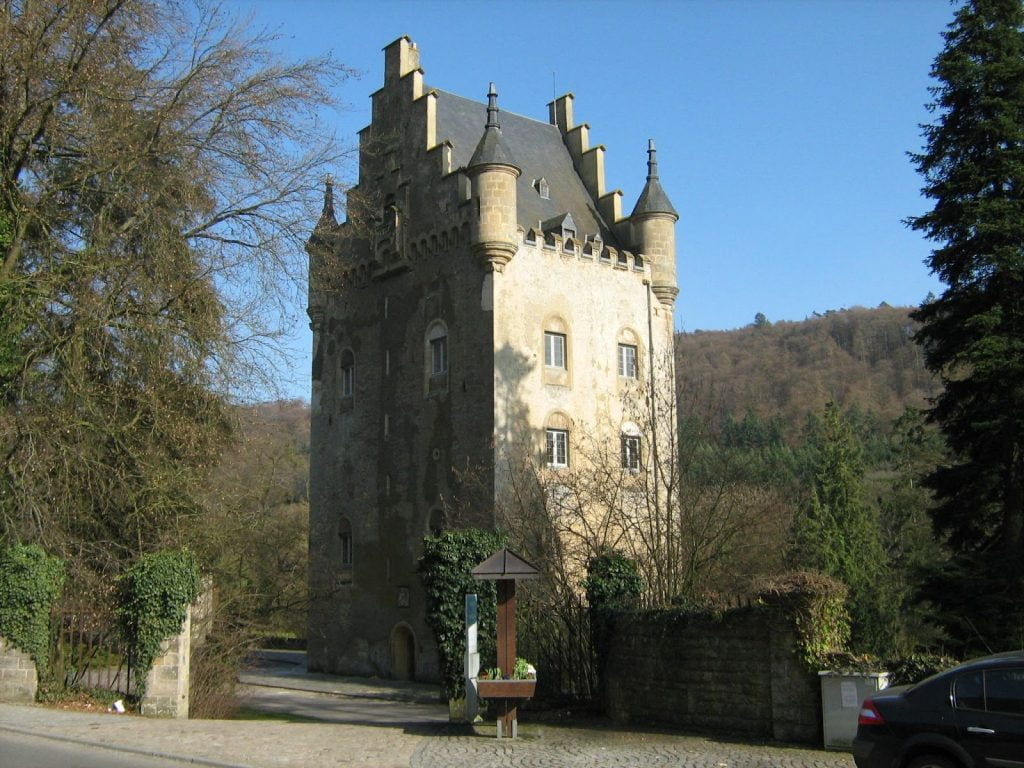
A picturesque medieval building, Schoenfels Castle is located in the Valley of Seven Castles. It has an intriguing, long history with ownership by many families.
Friedrich von Schoenfels built the castle in 1292 as a fortified keep. It later passed on to the Von Ansembourg family and then the Von Sassenheim family.
In the early 16th century, Lord Henry Schoenfels acquired the castle. Schoenfels Castle had no real strategic value. However, in 1683, its fortifications were stripped by the French Army. The castle continued to change ownership through the centuries that followed until 1971 when it became a property of the state.
Visit the museum, castle building, and the chapel, where a magnificent wooden organ is on display. Afterward, take a walk through the beautiful castle gardens.
- Location: Schoenfels, Central Luxembourg
- Time built: 12th Century
- Architectural style: Gothic
- Touring: Currently closed due to Covid until Jan 22, 2022. Check here for updated information.
Planning to Visit Nearby Countries? Check Out These Best Castles Lists:
10 Less Popular Castles Worth Visiting While In Luxembourg
11. Wiltz Castle
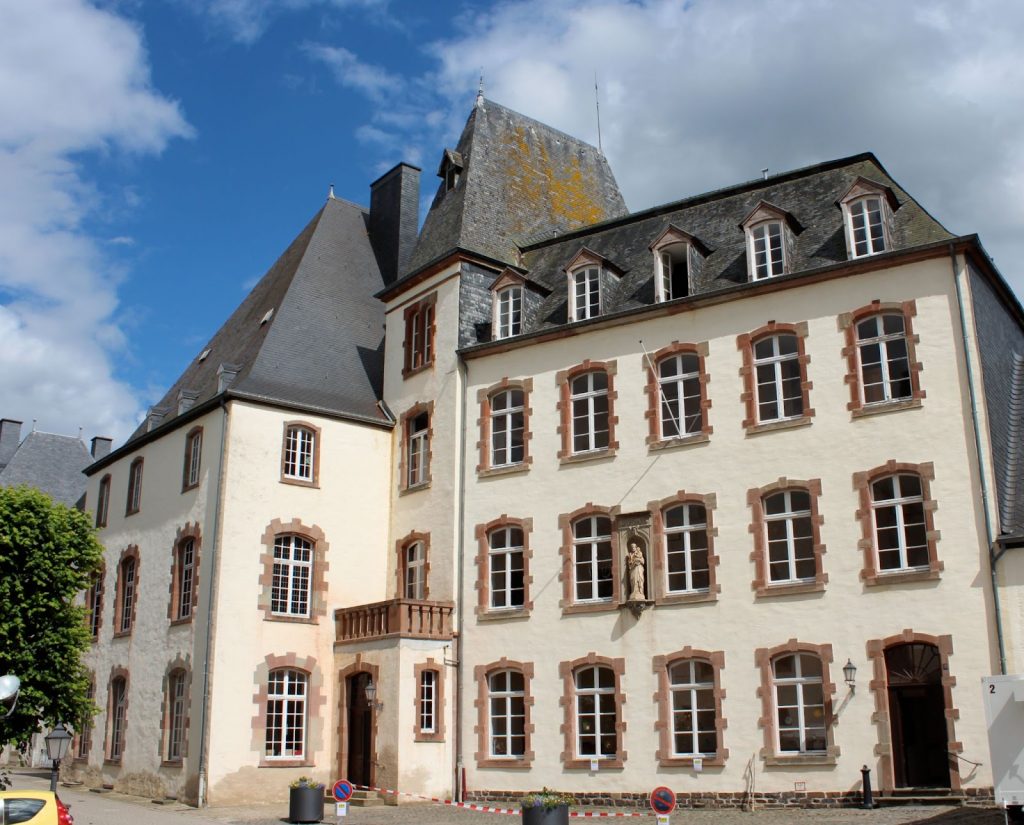
The Counts of Wiltz built a fortified castle in the late 13th century on a rocky outcrop. The French attacked Wiltz, setting the castle and town on fire in 1388. Wiltz Castle was soon rebuilt by the counts and stood majestically for over 60 years until it was again attacked and destroyed by Phillip of Burgundy in 1453.
The round tower referred to as the “Witches Tower” is the oldest part of the castle remaining today, built in 1573. The tower located in the eastern parts of the garden was subsequently restored twice.
- Location: Canton of Wiltz, Northern Luxembourg
- Time built: 13th Century
- Architectural style: Renaissance
- Touring: Visitors are welcomed at the castle
12. Ansembourg Castle

The name of Castle Ansembourg first appears in archived documents in 1135 when Count Hubert d”Ansembourg was lord of the castle. It is thought that medieval fortifications were added in the middle of the 12th century. The castle continued to be expanded throughout the centuries; the final new addition was the main entrance, where a date of 1565 is etched in the lintel. After a French attack in 1683, repairs were done in the 17th century by the Bidart and the Marchant et d”Ansembourg families.
Thomas Bidart built the new castle in 1639 and was given the title of the Lord of Ansembourg due to his prosperous pioneering in the fields of timber and iron manufacturing, completed close to the old castle.
- Location: Valley of the Seven Castles, Central Luxembourg
- Time built: 12th Century
- Architectural style: Medieval Architectural Style
- Touring: Ansembourg castle is a private residence, visitors are allowed in the beautiful gardens
13. Koerich Castle
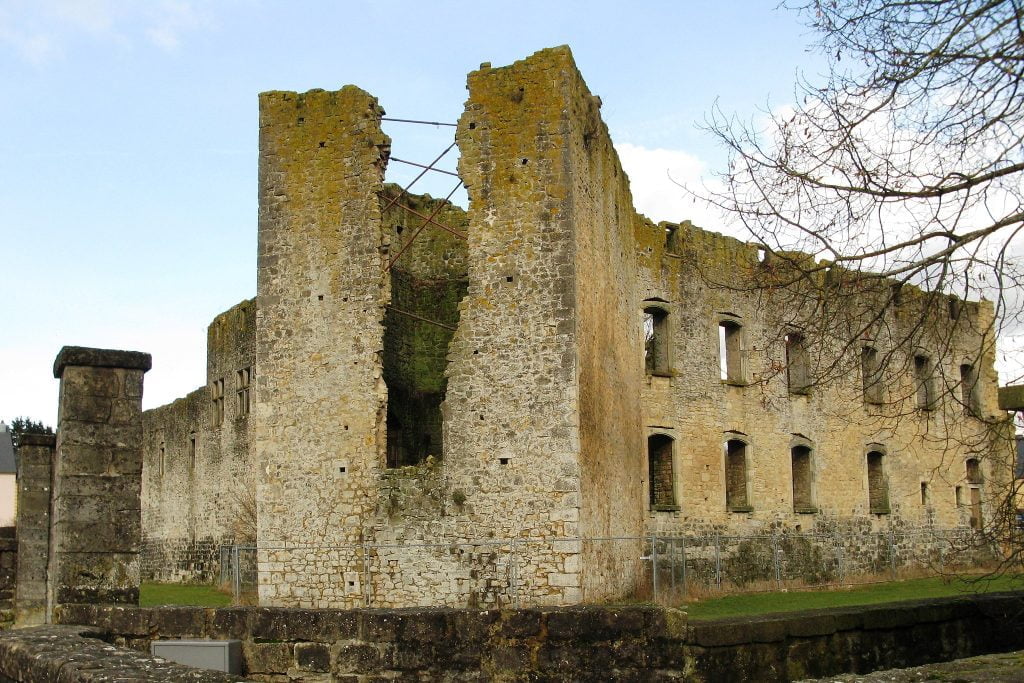
The impressive ruins of Koerich Castle show the tower and exterior walls built in the shape of an almost perfect square. The Lord of Koerich, Wirich 1st started building the castle in the late 12th century. The Witches Tower and the walls are built in the Romanesque style with bases about 12m (39 ft) thick, the original height would have been an imposing 25–30 meters (82-98 ft).
A reconstruction of Koerich Castle in the Gothic style was done in 1300. But today,the only remaining tower is located in the south-west and is referred to as “Chapel Tower” due to its dedication to St Michael.
- Location: Valley of the Seven Castles, Central Luxembourg
- Time built: Late 12th Century
- Architectural style: Romanesque/Gothic Architectural Style
- Touring: The ruins of Koerich castle are owned by the Luxembourg State
14. Pettingen Castle
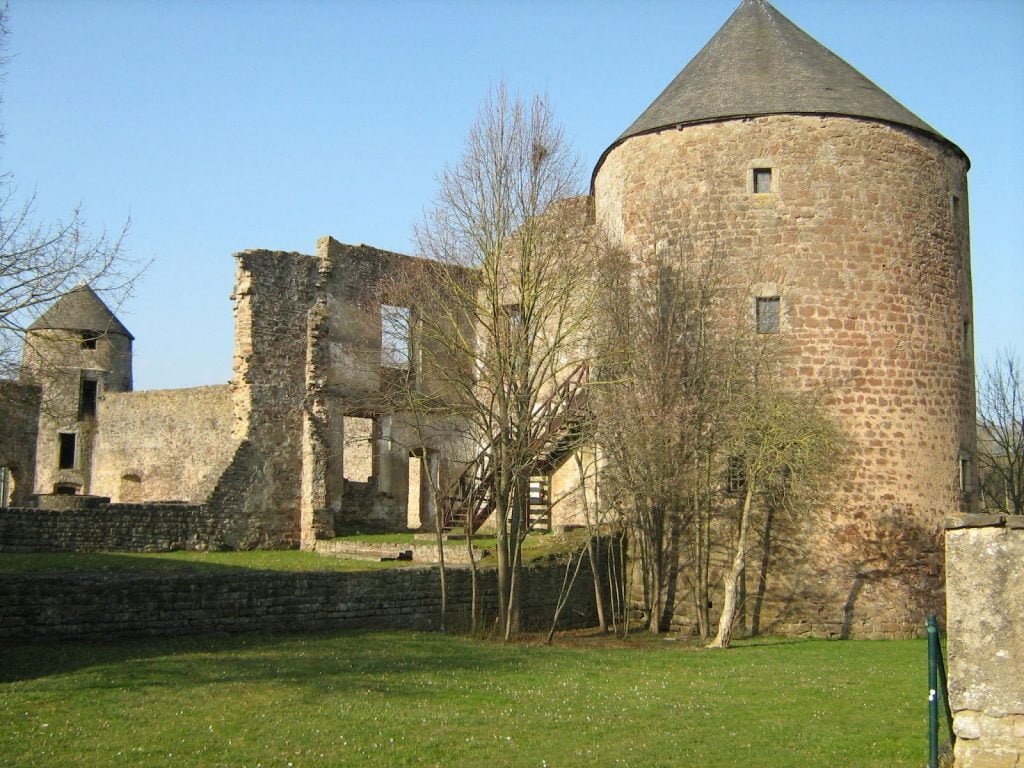
The beautiful ruins of Pettingen Castle, the 10th-century fortress of Pettange town, were known as Pittigero Mazini. During the 13th century, the castle became known as Pettange or Pittange. In 1494, amid a territorial war, the castle was destroyed and familial belongings confiscated. A decade later, half the treasure was returned and the family rebuilt Pettingen Castle.
The four corner towers, of which two are left standing today, were added in 1571. However, in 1684 Louis XIV’s troops led a path of destruction towards the castle leaving it in the state it is today.
- Location: Pétage, north of Merch, Central Luxembourg
- Time built: Pre-10th Century
- Architectural style: Medieval Architectural Style
- Touring: The ruins of Pettingen castle are owned by the Luxembourg State
15. The Grand Ducal Palace
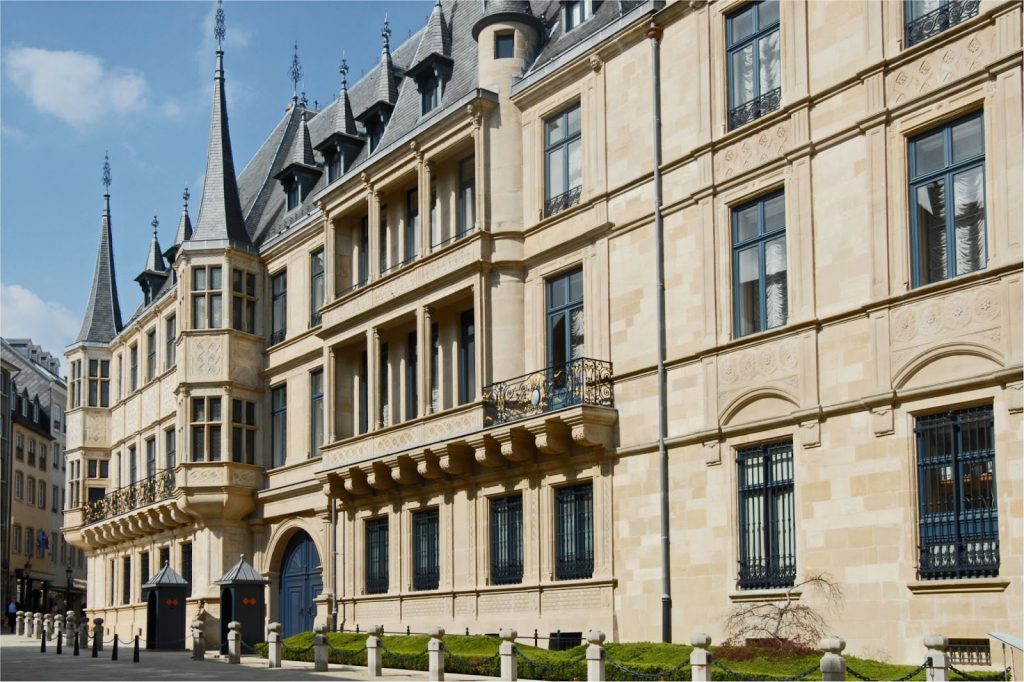
The Grand Ducal Palace is located on the site of the 15th century town hall of Luxembourg which was destroyed by a gunpowder explosion in 1554. After it was rebuilt, it became the seat of the “Department des Forêts” in 1795 and until 1817 it was the Luxembourg Government Headquarters.
The Governor of Luxembourg resided there from 1817 as the representative of the Dutch Grand Dukes. Prince Henry, Lieutenant-Representative of Luxembourg, used the Palace and renovated the interior in 1883 in preparation for a royal visit by Grand Duke William III.
Since the accession of the House of Nassau-Weilburg, the palace has been reserved exclusively for the Grand Duke and his family.
- Location: Luxembourg City
- Time built: 16th Century
- Architectural style: Renaissance Architectural Style
- Touring: The Grand Ducal Palace does allow tourists
Revisit More Historic Places Below or Read Further
16. Brandenbourg Castle
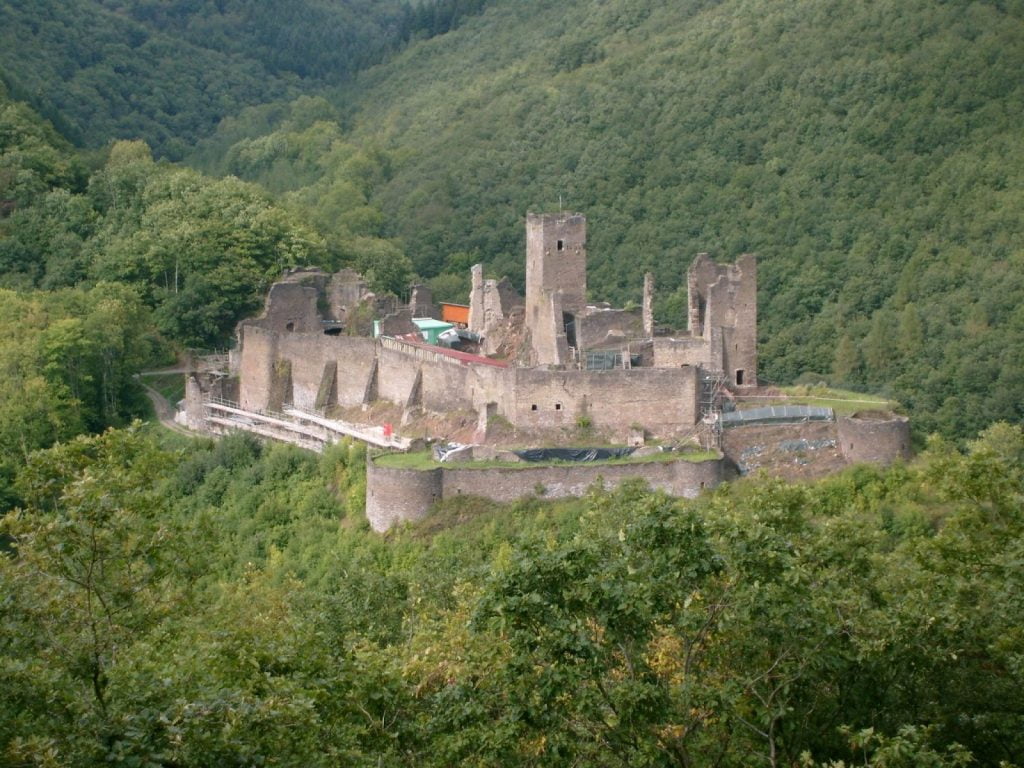
Brandenbourg Castle dates back to the 13th century, with a chapel being added in the 14th century. During the 15th and 16th century a bailey, two towers, curtained walls, and vaulted cellars were added. An interesting addition to this castle is the “fausse braye” and the artillery tower that was added in the 1500’s.
The castle was inhabited till the mid-17th century. After suffering an insurmountable attack by French troops around 1687, the castle fell into ruins and has remained uninhabited.
- Location: Brandenbourg, north-east of Luxembourg
- Time built: 13th century
- Architectural: Medieval Architectural Style
- Touring: The ruins are open to tourists
17. Aspelt Castle
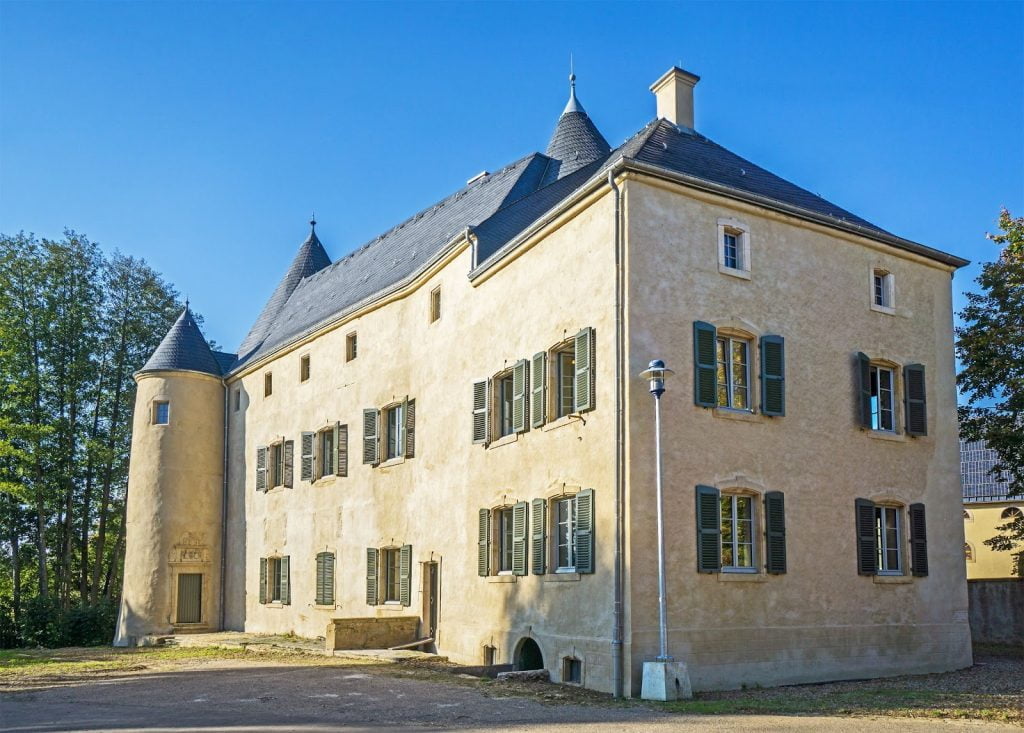
In 1590, this Baroque-style castle was built on the site of a 11th century medieval castle. The original medieval castle was a fortified structure with a moat possibly built on Roman ruins. Round Gothic towers, with foundations dating back to the 14th century, are a feature of this castle; and the south-west tower was completely restored in 1957.
From 1590, various alterations were done by the Ruelle, Kempt, and Burthé descendants. Aspelt Castle was extended and the Baroque windows were added by the Martiny’s in 1977.
- Location: Aspelt, Fresange Region, Southern Luxembourg
- Time built: 1590
- Architectural: Baroque Architectural Style
- Touring: Aspelt Castle is available for tourists
18. Hesperange Castle
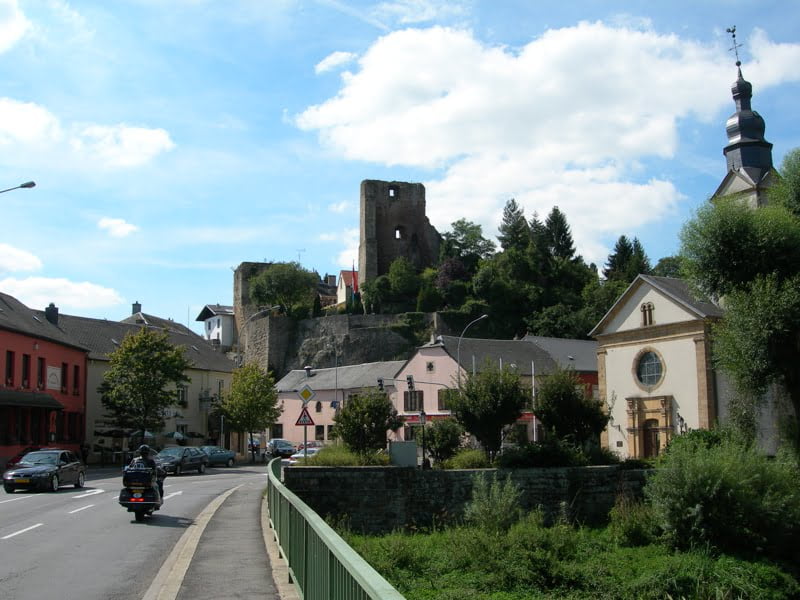
It is presumed that the counts of Luxembourg gave the fief of Hesperange to the Lords of Rodenmacher. The lords are the ones who most likely erected the castle on this strategic site that had been occupied since 867. During the conflict between the Burgundians and the Duchy of Luxembourg in the fifteenth century, the castle was dismantled and rebuilt twice.
The French captured the castle in 1796, before nationalizing the castle and selling it at auction in 1798. The ruins are a national monument today, but still privately owned.
- Location: Hesperange, Southern Luxembourg
- Time built: Early 13th century
- Architectural Style: Medieval
- Touring: Tourists are welcomed at the castle
19. Bettembourg Castle
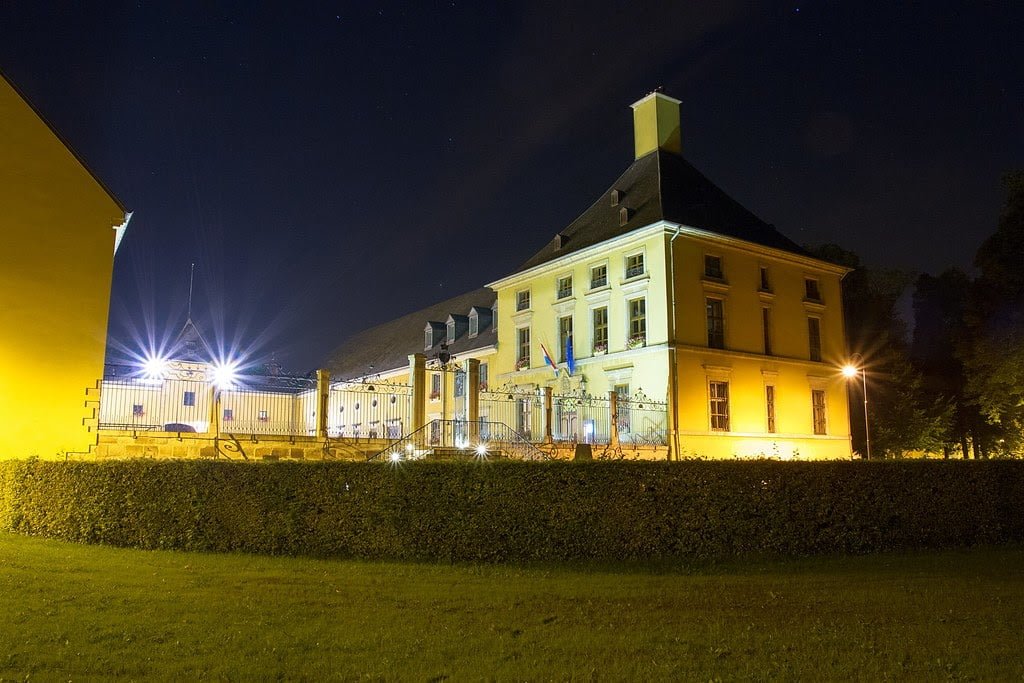
Bettembourg Castle is built on the ruins of a fortification dating back to the 10th century. In 1733, a farmstead was built on the site by Lothaire de Zievel beside the Düdelingerbach stream. The austere architecture is functional for a farmstead and typical for that period.
The south wing where the stables and barns were located is the oldest part of the castle. The north wing, which now forms part of the main U-shaped building, was added later. After the de Zievals died out, the castle passed through several owners and renovations, including the Vernoilles and Collart families, until August Collart sold the property in 1971.
Bettembourg Commune bought the castle and undertook extensive restorations prior to opening the building as the town hall in 1991. Currently the castle is the town hall and administrative center of Bettenbourg, as well as boasting a gallery and a large cultural room.
- Location: Bettembourg Commune, Luxembourg City
- Time built: Early 18th century
- Architectural Style: Austere
- Touring: The large park surrounding the castle is open to the public
20. Colpach Castle
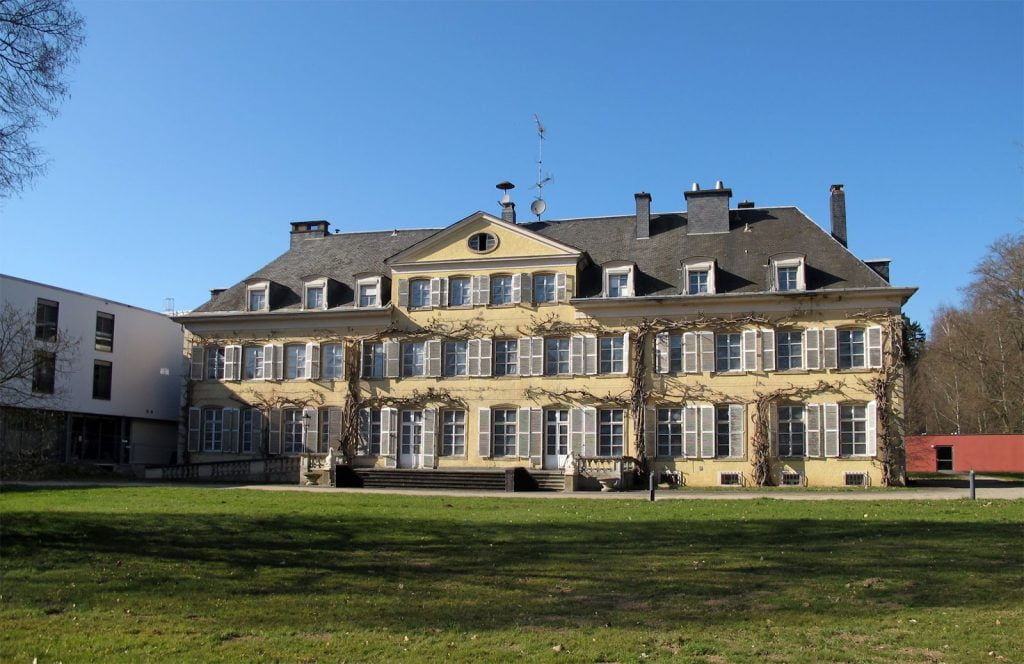
The small medieval stronghold of Colpach Castle was originally surrounded by a moat. From 1628, the Pforzheims owned the castle. They filled in the moat and converted it into a manor house. Baron Edouard de Marches operated the land as a gentleman’s farm during the 19th century, influencing the garden design significantly.
From 1900, the castle was deserted and was bought by the head of ARBED, Émile Mayrisch, in 1917. He had the castle updated and enlarged, and he and his wife used the castle to entertain politicians, artists and writers until the end of World War II. In 1947, Aline Mayrisch bequeathed the castle to the Red Cross.
- Location: Luxembourg City
- Time built: Early 18th century
- Architectural Style: Austere
- Touring: The large park surrounding the castle is open to the public
Planning to Explore Europe? Check Out These Best Castles Lists:
Conclusion
Luxembourg is the ideal place for you to visit and explore with more than 50 majestic castles, charming towns, and picturesque villages. Most of the castles have been restored to their original beauty. They will take you on a journey to explore the rich historic past of Luxembourg.
With this article, you have details about the 20 best castles to visit in Luxembourg. While you must be fascinated by reading about their rich history, the actual experience of visiting each of these historic destinations is one like none other you have had.
Before you travel, it is important that you have planned your trip in detail and made the necessary reservations.
For further information about tourist attractions, accommodations, and restaurants in Luxembourg, please browse our website and feel free to contact us.

